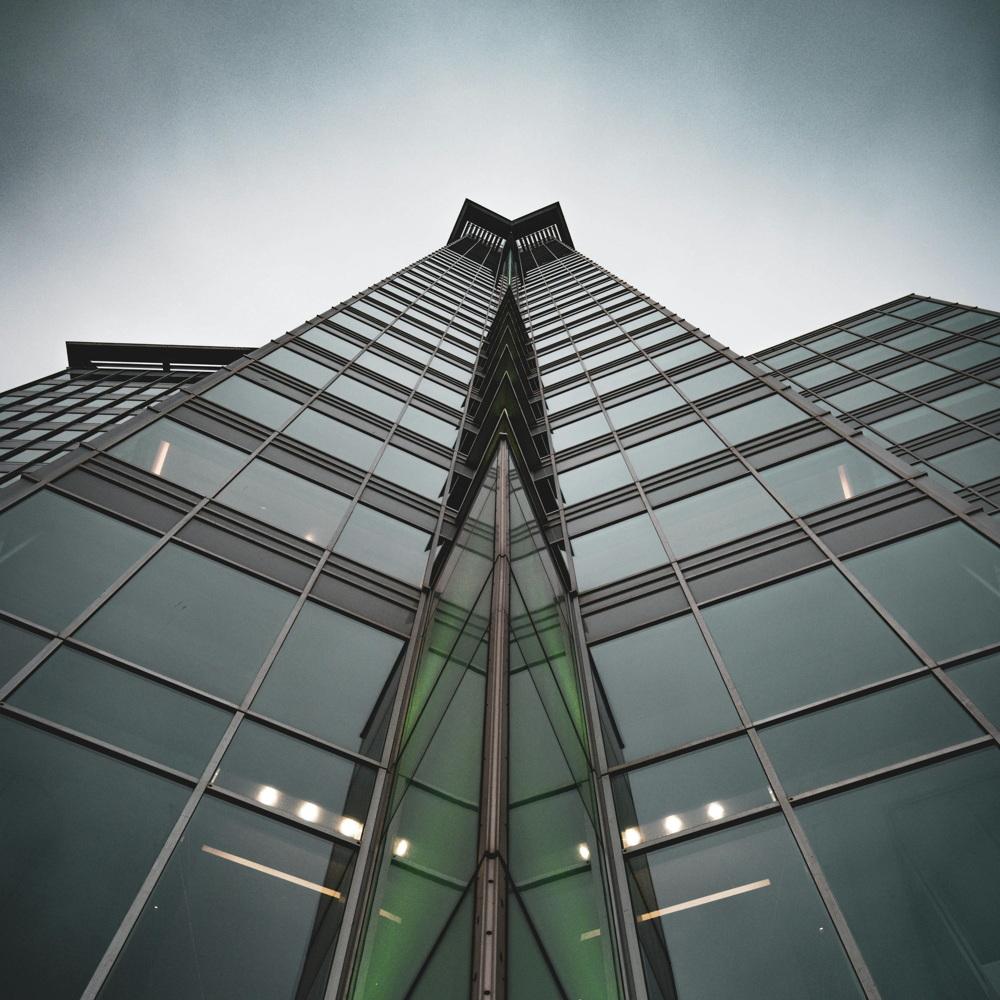Intro
Not long ago, software lived safely behind screens. We clicked, tapped, and swiped, and our interactions stopped at the glass surface of our devices. That separation between the digital and physical worlds is quickly fading. Today, software doesn’t just process information, it moves machines, manages cities, saves lives, and steers vehicles at highway speeds.
This shift into the physical world is powered by Cyber-Physical Systems (CPS), integrated networks of computation, communication, and control that blend the digital and physical in real time. Unlike traditional applications, CPS don’t just display results, they act on the world. They sense, decide, and respond continuously, whether it’s an autonomous car braking to avoid an accident, a smart grid redistributing energy, or a surgical robot adjusting to a surgeon’s hand with microscopic precision.
In this article, we’ll explore what cyber-physical systems are, why they matter, the challenges they pose, and how software engineers can prepare to design and build them. If the Internet defined the past three decades of software innovation, CPS will define the next three.
Table of Contents:
Defining Cyber-Physical Systems (CPS) – Beyond Simple Connectivity

A cyber-physical system (CPS) is a system in which software, communication networks, and physical processes operate together as one. Unlike conventional applications that live purely in the digital world, CPS sense their environment, process information, and act on the physical world in a continuous feedback loop.
At the core of every CPS are three tightly linked elements:
- Computation — algorithms and logic that analyze inputs and decide what to do.
- Communication — the data exchange that keeps distributed components coordinated.
- Control of Physical Processes — sensors that gather information and actuators or machines that carry out instructions.
The difference between CPS and the Internet of Things (IoT) lies in this closed loop. IoT connects devices; CPS controls processes. To put it simply:
- IoT is like a security camera sending video to your phone.
- CPS is like a security system that detects unusual behavior, locks the doors, alerts the police, and guides people to safety, automatically, in real time.
This distinction matters because CPS go beyond connectivity. They unite computation and control so that digital systems can manage physical processes directly, the foundation of technologies like autonomous vehicles, smart grids, robotic surgery, and precision agriculture.

A Brief History – From Embedded Systems to Cyber-Physical Systems
Cyber-physical systems did not emerge overnight. They are the product of decades of progress in computing, control theory, and communications technology. Tracing this evolution makes it clear why CPS are gaining momentum today.
1970s – 1990s: Embedded Systems
The introduction of affordable microprocessors allowed small computers to be built into cars, appliances, and industrial machines. These embedded systems were reliable but limited, designed for specific tasks and rarely connected to the outside world.
2000s: The Internet of Things (IoT)
As networking advanced, devices began to share data across the internet. Smart thermostats, wearables, and connected appliances emerged under the banner of the Internet of Things (IoT). Most IoT systems, however, focused on collecting and reporting data, not controlling processes in real time.
2010s: The Emergence of CPS
Researchers introduced the term cyber-physical systems to describe a new generation that went beyond IoT. CPS combined computation and physical processes in closed feedback loops, enabling real-time adaptation. Technologies such as autonomous vehicles, smart grids, and intelligent robotics moved from research labs into early deployment. Outsourcing models played a major role in scaling these innovations, as explored in our article Nearshore vs Offshore Software Development in 2025, which breaks down cost, risk, and scalability trade-offs.
2020s and Beyond: The CPS Era
Today, CPS are no longer prototypes but the backbone of critical industries. Autonomous driving, precision agriculture, robotic surgery, and renewable energy systems all rely on CPS principles. Advances in artificial intelligence, machine learning, and low-latency communication (5G, edge computing) are accelerating adoption.
Just as the internet transformed communication and commerce in the 1990s, cyber-physical systems are now set to transform the physical infrastructure of society itself.
Market Momentum – Why CPS Is Accelerating
The shift toward cyber-physical systems (CPS) is no longer speculative, it’s already underway, with adoption growing across industries worldwide. Market data shows just how quickly CPS are moving from research into mainstream deployment.
Key Market Figures (2025)
- In 2025, the global CPS market is estimated at roughly USD 135–140 billion.
- By 2029, it is projected to reach around USD 255 billion, with a compound annual growth rate (CAGR) of about 15% between 2024 and 2029.
- Longer-term forecasts suggest the market could surpass USD 470 billion by 2034, maintaining strong double-digit growth.
What’s Driving the Growth
- Industrial Automation & Smart Infrastructure
CPS are becoming central to factories, energy systems, and transportation, enabling real-time monitoring, predictive maintenance, and reduced downtime. These are also the hallmarks of digital transformation initiatives that we support at Arnia, helping businesses modernize operations and unlock new efficiencies.
- Advances in AI, IoT, and Digital Twins
Digital replicas of physical assets allow organizations to simulate, optimize, and validate systems virtually before rolling them out, making CPS more reliable and cost-effective.
- Improved Connectivity & Edge Computing
The rollout of 5G and emerging 6G research, combined with more powerful edge processors, enables CPS to make faster decisions closer to where data is generated.
- Regulation, Safety, and Sustainability Pressures
Governments and industries are mandating safer, more sustainable systems. CPS provide the tools to meet these requirements in healthcare, transportation, and energy.
The Architecture of Cyber-Physical Systems – How They Work
A cyber-physical system is more than just a network of connected devices. It is a layered structure where software, communication, and hardware form a continuous loop. Understanding these layers makes it easier to see how CPS sense, decide, and act in real time.
1. The Sensing Layer
This is where the physical world meets the digital one. Sensors capture data, from motion and position to temperature, energy use, or patient health metrics. Without accurate inputs, a CPS cannot respond effectively.
2. The Computation Layer
Raw data is processed here and turned into decisions, often through complex AI models or control algorithms. Many companies accelerate this stage with software development outsourcing, gaining access to specialized expertise while keeping systems efficient and scalable. Algorithms stabilize aircraft, AI models detect faults on factory lines, and optimization logic balances power grids. Timing is critical: responses often must happen in milliseconds.
3. The Communication Layer
CPS components rarely work in isolation. The communication layer keeps sensors, controllers, and actuators synchronized. Protocols such as MQTT, OPC UA, and DDS, along with low-latency 5G networks, ensure reliable, secure data flow across distributed systems. Paired with cloud solutions, these communication protocols give CPS the flexibility to scale seamlessly while maintaining real-time responsiveness.
4. The Actuation Layer
Decisions become actions. Actuators, motors, and robotic arms execute instructions, braking a car, assembling parts, or opening a valve in a treatment plant.
5. The Feedback Loop
What makes CPS unique is the closed loop:
- Sense → gather data.
- Compute → decide on a response.
- Act → carry it out.
- Repeat → monitor the result and adjust.
This loop allows CPS to adapt continuously to changing conditions rather than follow a static script.
Why CPS Is the Next Frontier in Software Engineering
Software has always been about solving problems, but most of those problems have remained within the digital world such as databases, enterprise platforms, web and mobile applications. Cyber-physical systems (CPS) change that. They extend software into the physical world, where decisions affect machines, infrastructure, and people in real time.
The stakes are higher. A bug in an app may cause frustration; a bug in a medical device, aircraft, or autonomous car can cost lives. That’s why engineers must design with physics as well as logic in mind. Latency, reliability, safety margins, and timing are as critical as algorithms. In CPS, safety and real-time performance are not extras, they’re the foundation.
CPS also raise complexity. Thousands of sensors, distributed controllers, and adaptive AI models must work together seamlessly. Approaches like model-driven engineering, digital twins, and layered architectures are becoming standard tools for managing this scale. Meanwhile, AI-driven autonomy creates new possibilities but also risks around explainability, bias, and unpredictable behavior.
For software engineers, this is both a challenge and a career-defining opportunity. Just as the internet reshaped technology careers in the 1990s, CPS mark a once-in-a-generation shift. Success will demand new skills in real-time programming, distributed systems, AI integration, safety-critical standards, and cybersecurity. In short: CPS require engineers who can build code that doesn’t just run, it interacts safely with the real world.
Challenges – Why Cyber-Physical Systems Are Hard to Build
Cyber-physical systems (CPS) combine software, hardware, and networks in ways that are powerful, but also difficult to engineer. Below are the biggest challenges teams face when building CPS, and why they matter.
1. Real-Time Constraints
CPS must act within strict time limits. In an autonomous vehicle, even a few milliseconds of delay could mean a collision. This makes timing correctness as important as functional correctness. Engineers need deterministic execution and predictable scheduling to guarantee responses happen fast enough.
2. Safety and Reliability
Unlike traditional apps, CPS failures have physical consequences. A medical device or aircraft system can’t simply “patch later.” Safety must be designed in from the start, with redundancy, fault tolerance, and rigorous real-world testing.
3. Security With Physical Impact
A cyberattack on a CPS can cause more than data loss, it can disrupt infrastructure or even endanger lives. Addressing these risks requires a layered approach that starts with secure hardware roots of trust and extends through real-time anomaly detection. Advanced cryptography is also becoming essential. For example, zero-knowledge proofs enable sensitive data to be safeguarded without compromising functionality. Power grids, vehicles, and hospital systems are all potential targets, making security a foundational requirement rather than an afterthought.
4. System Complexity and Integration
Modern CPS combine thousands of components: sensors, controllers, operating systems, and AI models. Coordinating these without introducing fragility is a huge challenge. Integration testing is costly, but essential to ensure all parts work together reliably.
5. Big Data, Edge, and Cloud
CPS generate massive streams of sensor data that must be processed instantly. Balancing edge computing for speed with cloud computing for scale is a constant engineering trade-off.
6. Interoperability and Legacy Systems
Industries like manufacturing and energy often depend on older control systems. Integrating CPS with legacy systems, without disrupting operations, remains a moving target. To bridge that gap, organizations often turn to staff augmentation, adding domain experts who ensure smooth integration while preserving business continuity.
7. Regulation and Compliance
CPS often operate in safety-critical industries where standards are strict: ISO 26262 (automotive), DO-178C (aerospace), IEC 61508 (industrial). Meeting these requirements demands not just technical expertise but also extensive documentation and certification, adding time and cost to development.
Best Practices in Cyber-Physical Systems Engineering
Building cyber-physical systems is complex, but engineers have developed proven strategies to make them safer, more reliable, and easier to scale. Here are the best practices guiding successful CPS development today.
Use Model-Driven Design and Digital Twins
Simulation is essential before deployment. Model-driven engineering lets teams design and test systems virtually, while digital twins, real-time virtual replicas, allow engineers to predict behavior, run “what-if” scenarios, and detect vulnerabilities early. This reduces costs and prevents costly errors.
Co-Design Hardware and Software
In CPS, hardware and software are inseparable. Decisions about sensors, processors, and actuators directly affect algorithms and timing. A co-design approach, where hardware and software teams collaborate from the start, ensures performance, efficiency, and reliability.
Apply Formal Verification and Safety Assurance
Traditional testing is not enough for safety-critical systems. Formal methods (like model checking) mathematically prove correctness, while runtime verification monitors systems as they operate. Together, they reduce the risk of failure in critical environments.
Balance Edge and Cloud Computing
CPS need both speed and scale.
- Edge computing enables real-time decisions close to devices.
- Cloud computing provides large-scale analytics and coordination.
A hybrid edge–cloud architecture balances both, ensuring responsiveness without losing system-wide insight.
Build Security In from the Start
Security cannot be an afterthought. CPS best practices include:
- Secure boot and trusted hardware.
- Strong encryption for data in motion.
- Real-time intrusion detection.
- Regular penetration testing.
A layered “security by design” approach protects against cyberattacks with physical consequences.
Enable Continuous Monitoring and Updates
CPS must adapt to changing conditions and evolving threats. Embedding telemetry and monitoring across the system allows real-time oversight. With over-the-air (OTA) updates, patches and improvements can be deployed without downtime, keeping systems safe and up to date.
Follow Standards and Document Everything
Standards such as ISO 26262, DO-178C, and IEC 61508 exist for a reason. They ensure safety, reliability, and interoperability. Clear documentation not only supports certification but also makes maintenance and future upgrades more efficient.
The Takeaway
The most successful CPS projects apply systems thinking: simulation with digital twins, hardware–software co-design, rigorous verification, hybrid computing, built-in security, continuous monitoring, and strong adherence to standards. These best practices don’t just reduce risks, they make CPS trustworthy foundations for the industries they serve.
Real-World Applications of Cyber-Physical Systems
Cyber-physical systems are not futuristic concepts locked away in research labs. They are already embedded in industries that affect daily life, from how we travel and power our homes to how we receive healthcare. Below are some of the most significant application areas.
1. Autonomous Vehicles and Transportation
Modern vehicles are essentially rolling CPS platforms.
- Autonomous cars use sensors like LIDAR and radar to sense their surroundings, onboard computers to process data, and actuators to steer, accelerate, and brake.
- Cooperative traffic systems allow vehicles to communicate with each other and with road infrastructure, reducing congestion and preventing accidents.
- Public transit systems integrate CPS for predictive scheduling, real-time monitoring, and adaptive route planning.
2. Smart Energy and Grids
Energy systems are becoming more complex as renewable sources like wind and solar are added to the grid.
- Smart grids use CPS to balance supply and demand, prevent overloads, and stabilize voltage across regions.
- Microgrids in local communities or hospitals can automatically switch between renewable, battery, and conventional power sources during outages.
- Demand-response systems adjust household or industrial energy usage dynamically based on real-time pricing and grid stability.
3. Healthcare and Medical Devices
In healthcare, CPS are enabling new forms of treatment and patient care, an area where Arnia’s industry expertise supports organizations building reliable, scalable, and secure software solutions
- Remote patient monitoring systems track vital signs and alert doctors to anomalies.
- Robotic-assisted surgery uses real-time feedback to enhance precision and safety.
- Smart prosthetics and implants adjust dynamically to patient movements or conditions.
- Drug delivery systems can automatically adapt dosages based on sensor input, reducing risks of under- or overmedication.
4. Industrial Automation and Manufacturing
Factories are some of the largest beneficiaries of CPS technology.
- Predictive maintenance: Machines monitor their own wear and tear, scheduling repairs before breakdowns occur.
- Digital twins of production lines allow engineers to simulate workflows and optimize efficiency before making physical changes.
- Adaptive robotics: Robots on assembly lines adjust their behavior based on the state of materials and machines around them.
- Supply chain integration: CPS coordinate across warehouses, shipping, and manufacturing plants for real-time logistics optimization.
5. Agriculture and Food Systems
Agriculture is adopting CPS to address food security and resource efficiency.
- Precision farming: Drones and ground-based sensors monitor soil quality, moisture, and crop health.
- Automated irrigation: Water usage adapts to real-time weather and soil conditions.
- Harvesting robots: Equipped with vision systems and actuators, they can pick crops at peak ripeness.
6. Smart Cities and Infrastructure
Cities are complex systems that benefit from CPS coordination.
- Traffic management systems reduce congestion by adjusting signals dynamically.
- Smart buildings monitor energy consumption, air quality, and occupancy, adjusting systems for comfort and efficiency.
- Disaster response networks detect earthquakes, floods, or fires and coordinate emergency actions automatically. Traffic management systems reduce congestion by adjusting signals dynamically.
The Broader Impact
Across industries, CPS are reshaping how systems are built and operated:
- They increase efficiency by automating responses.
- They improve safety by reducing human error.
- They enable sustainability by optimizing resource use.
These examples illustrate why CPS are not a niche technology but a core infrastructure for the modern world.
The Future of Cyber-Physical Systems
Cyber-physical systems are already reshaping industries, but the most profound changes are still ahead. Over the next decade, CPS will evolve from specialized solutions into ubiquitous infrastructure, as essential to modern life as the internet is today. Here’s what the future is likely to hold.
1. AI-Native CPS
So far, most CPS rely on fixed control algorithms supplemented by machine learning. By 2030, we can expect AI-native systems where intelligence is embedded at every layer.
- Adaptive behavior: CPS that learn from experience and optimize themselves without human tuning.
- Predictive decision-making: Moving from reactive responses to proactive anticipation of events.
- Context awareness: Systems that understand broader environments, not just immediate sensor inputs.
2. Self-Healing and Resilient Systems
Reliability will become as important as functionality. Research is moving toward CPS that can:
- Detect faults or attacks automatically.
- Reconfigure themselves to keep operating safely.
- Restore normal performance without requiring downtime.
Such resilience will be critical for power grids, healthcare systems, and transportation networks where interruptions are costly or dangerous.
3. TinyML and Edge AI
Instead of relying solely on cloud resources, CPS will increasingly process intelligence on the edge.
- TinyML — machine learning models small enough to run on low-power devices, will allow CPS to act faster and consume less energy.
- Edge AI will enable cars, drones, and medical implants to make decisions locally, even when connectivity is limited.
4. Greater Standardization and Regulation
As CPS spread into critical sectors, governments and industry groups will push for:
- Unified safety and interoperability standards across automotive, healthcare, and energy.
- Stronger cybersecurity regulations to prevent attacks with physical consequences.
- Certification frameworks that reduce the burden on developers while ensuring public trust.
5. CPS and Sustainability
CPS will play a central role in tackling environmental challenges.
- Energy optimization in smart grids and smart buildings.
- Precision agriculture to minimize water, fertilizer, and pesticide use.
- Sustainable mobility through coordinated traffic management and electrified transportation.
6. Human-CPS Collaboration
The next wave of CPS will not replace humans but work alongside them.
- Augmented workers: Smart exoskeletons and cobots (collaborative robots) will assist humans in manufacturing, logistics, and healthcare.
- Decision support systems: Doctors, engineers, and city planners will use CPS as partners that provide real-time recommendations.
- Ethical and social considerations: Engineers will face the challenge of ensuring transparency, explainability, and fairness in CPS decision-making.
7. Cross-Domain Integration
Today, CPS are often siloed by industry. The future lies in interconnected CPS ecosystems.
- Vehicles will talk to energy grids for charging optimization.
- Smart homes will coordinate with healthcare systems for wellness monitoring.
- Cities will integrate traffic, energy, and public safety systems into unified platforms.
Looking Ahead
By 2030, CPS will be everywhere, from the devices in our homes to the systems that power our societies. The most important shift, however, won’t be technological but cultural: CPS will change expectations of how systems behave. People will assume that machines are not only connected, but also aware, adaptive, and trustworthy.
For software engineers, this is both a responsibility and an opportunity: to design the systems that will quietly run the physical world of the future.
Frequently Asked Questions About Cyber-Physical Systems
1. What is a cyber-physical system in simple terms?
A cyber-physical system (CPS) is a system where computers and software directly control and interact with physical processes through sensors and actuators. They constantly sense the environment, process data, and take action in real time.
2. How are CPS different from IoT?
IoT connects devices and allows them to share data. CPS goes further, it not only collects and shares data but also analyzes it and automatically controls physical processes. For example, IoT can tell you your car tire is low, while CPS adjusts the tire pressure automatically.
3. What are examples of cyber-physical systems?
- Autonomous vehicles (self-driving cars, drones)
- Smart energy grids that balance renewable power
- Robotic-assisted surgery systems
- Smart factories with predictive maintenance and digital twins
- Precision agriculture with automated irrigation and crop monitoring
4. Why are cyber-physical systems important?
CPS are important because they make systems more efficient, safer, and adaptive. They reduce human error, improve reliability, and enable real-time optimization in critical areas like healthcare, energy, and transportation.
5. What are the biggest challenges in CPS?
- Meeting real-time performance requirements
- Ensuring safety and reliability in unpredictable environments
- Protecting systems from cyberattacks with physical consequences
- Integrating heterogeneous hardware, protocols, and legacy systems
- Meeting strict regulatory and certification standards
6. What skills do engineers need to work on CPS?
Engineers working on CPS need expertise in:
- Real-time systems programming
- Control theory basics
- AI and machine learning integration
- Distributed systems and communication protocols
- Safety-critical standards
- Cybersecurity for physical systems
7. What is the future of cyber-physical systems?
By 2030, CPS will be integrated into most industries, from autonomous mobility and smart cities to healthcare and agriculture. Future CPS will be AI-native, self-healing, more sustainable, and standardized across industries, making them as indispensable as the internet is today.
Conclusion
Cyber-physical systems are no longer experiments, they are becoming embedded in daily life, shaping the cars we drive, the grids that power our homes, and the devices that keep us healthy.
For software engineers, CPS demand more than new skills; they demand a new mindset. Code must not only run correctly but also perform safely and reliably in the physical world, where milliseconds and safety margins matter.
The internet transformed communication. Cloud computing transformed business. Artificial intelligence is transforming decision-making. Now, CPS are set to transform the physical infrastructure of society itself, and the question is not whether they will reshape your industry, but how quickly, and whether you will lead or follow.
How We at Arnia Support Emerging Technologies
At Arnia Software, we focus on building high-quality, tailored software solutions that help organizations adapt to change and prepare for the future. Through our work in custom software development, digital transformation, mobile applications, quality assurance, and team extension services, we provide the foundations businesses need to innovate confidently.
We collaborate with partners across industries such as automotive, healthcare, telecom, finance, utilities, and retail, all of which are rapidly adopting new technologies that demand reliability, scalability, and in many cases, real-time responsiveness.
To explore how Arnia can support your technology journey and help you prepare for the next wave of innovation, connect with us through our contact page.




